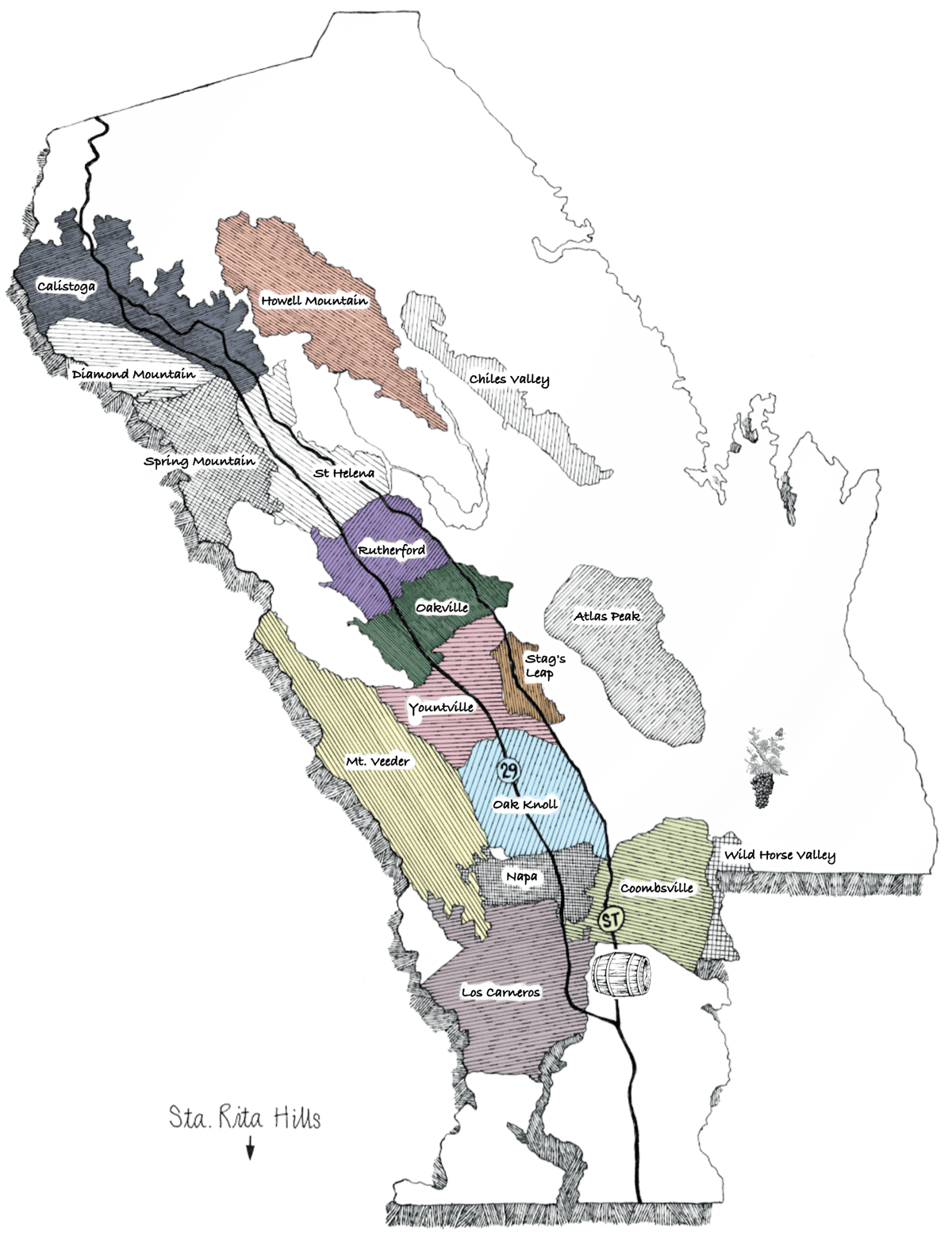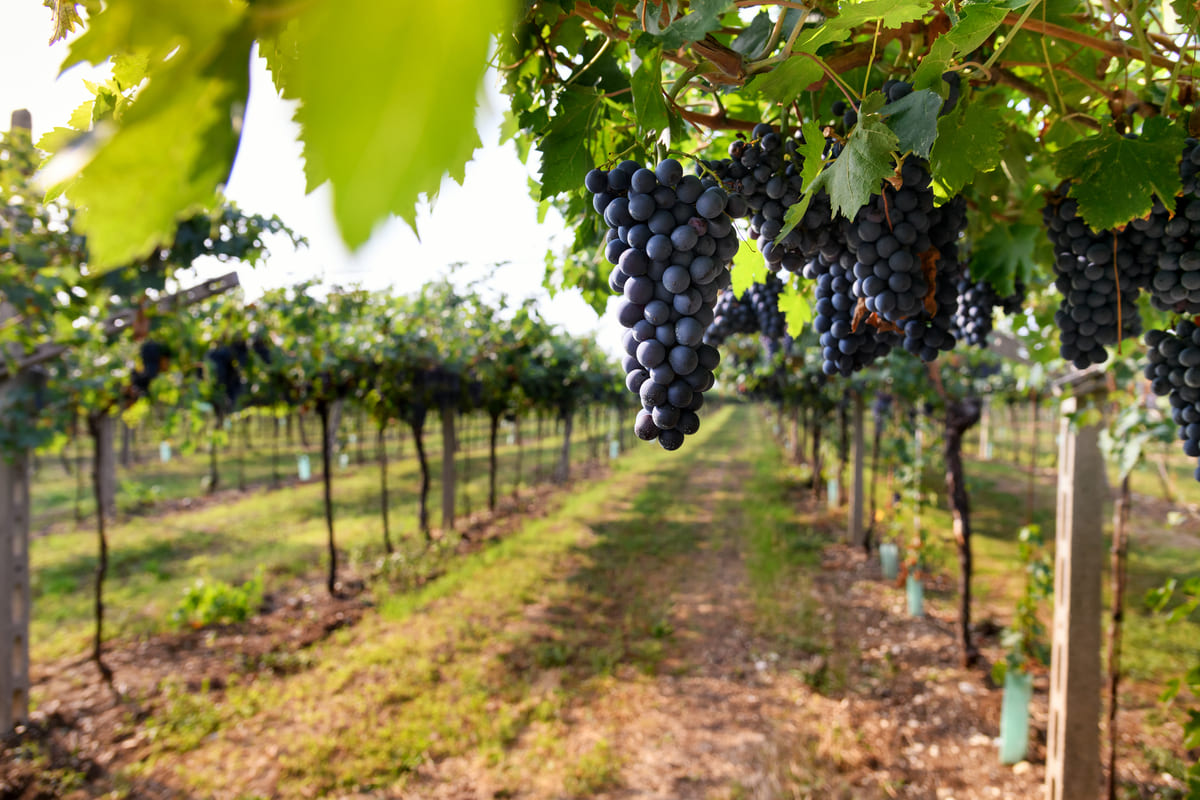A single story can be told in a million different ways. So too, can a single grape taste, smell, and feel differently from place to place. Napa Valley is a historical place for American wine; it was the first to show the world that terroir is not exclusive to France. The wines here express a sense of place unlike any other in the world.
For winemakers here, growing Cabernet Sauvignon in Napa Valley is a lifelong practice and each vintage is a new chapter.
Soil sets the scene
Winemaking requires the right kind of soil. The vineyards of Napa enjoy a combination of soils that all make a different impact on the overall expression of the wine. The volcanic soils found here provide good drainage and high mineral content. As a result, the wines are mineral-driven with racy acidity.
The alluvial soils of the valley, made of sand, gravel, and silt, are also rich in mineral deposits and make elegant, aromatic wines. Sedimentary soils also provide good drainage but crucially retain water in dry weather. These soils, often containing marine fossils, create complex wines with intense structure.
Microclimates throughout the valley
Napa Valley is shaped like an hourglass, with the southerly regions enjoying the moderating effect of the nearby sea and cool breezes from the bay. The wines here are balanced and cool-headed. Moving inland, temperatures grow warmer, and fruit ripens to higher intensities. The valley’s hourglass shape creates diverse microclimates, from the cooler, coastal-influenced southern regions to the warmer, sun-soaked northern areas. This variance influences ripening patterns, where the grapes achieve different levels of sugar and acid, creating a spectrum of flavor profiles.

The valley’s latitude positions it closer to the equator than Bordeaux, allowing it to benefit from a Mediterranean climate with warm days and cool nights—ideal conditions for growing Cabernet Sauvignon. Temperatures in the region can range from 50°F (10°C) to over 90°F (32°C) during the growing season, with Napa Valley enjoying an average temperature that is perfectly situated for Cabernet cultivation.
Along the valley, the varying topography offers different aspects of sun exposure to the grapevines. Throughout Napa, vineyards are planted along the valley floor, benchlands, hillsides, and mountaintops, and with each difference comes a unique Cabernet. Higher elevations, such as those found in the mountain vineyards, expose vines to more intense sunlight and cooler temperatures at night, fostering a balance of acidity and tannin that defines some of Napa’s most celebrated wines.
The Many Clones of Cabernet: Choices by the Winemaker
Terroir extends beyond the land to the winemaker. That includes choosing which of the 60 Cabernet Sauvignon clones to plant. When it comes to clones, diversity is key, and each clone responds a little differently to each microclimate. Some clones are known for making tighter bunches, while others yield larger bunches and berries. Some clones emphasize fruit flavors, while others are known for their structure.
Through the valley, the varying winemaking styles are plenty. The choice to age Cabernet in oak is always considered. But the question becomes: to age in new oak, which will impart more pronounced oaky flavors, or to go with neutral oak, which is more subtle? To use French, American, or another type of oak? To ferment the wine in oak or to age it in an oak barrel after fermenting is done? Each of these choices creates a new wine.
Fermentation practices also vary, with some winemakers opting for wild yeast to add complexity, while others use cultured yeast for consistency. The fermentation temperature and duration, whether a few days or several weeks, influence the extraction of flavors and tannins, which ultimately defines the wine’s structure and aging potential. Napa’s winemakers often pick grapes at a specific Brix level—a measure of sugar content that varies from region to region—to ensure the desired balance of alcohol, acidity, and flavor.
The Napa Valley Advantage
What sets Napa Valley apart in the world of Cabernet Sauvignon is not just the terroir but the dedication to excellence at every step. The region’s winemakers are known for their meticulous approach, with dedicated vineyard and cellar teams that focus on every detail. This includes picking grapes at the perfect moment of ripeness, often at a Brix level unique to Napa, and employing winemaking techniques that emphasize the region’s strengths. Napa’s Cabernet Sauvignons are celebrated for their aging potential, complexity, and the way they capture the essence of the valley’s terroir.
Time is the secret ingredient to all of Napa’s Cabernet as it develops complexity as it sits in the barrel or bottle. It’s up to the winemaker to decide how long that should be. For those interested in a deeper dive into winemaking techniques, from fermentation to aging, and the impact these choices have on the final product, be sure to check out our dedicated blog on Napa winemaking.
Cabernet Sauvignon & Napa Valley: A Legendary Duo
Can you name a more legendary duo? We’re reminded of Dr. John Watson’s devotion to his friend Sherlock Holmes. Napa is the Dr. Watson to Cabernet’s Sherlock—endlessly loyal, emphasizing its genius, and providing an anchor for expression. After all, the Napa Valley terroir is the storyteller we can count on, through which we happily delight in the tale of Cabernet Sauvignon.

